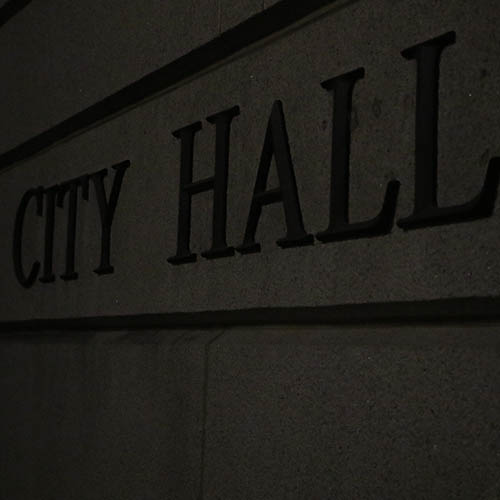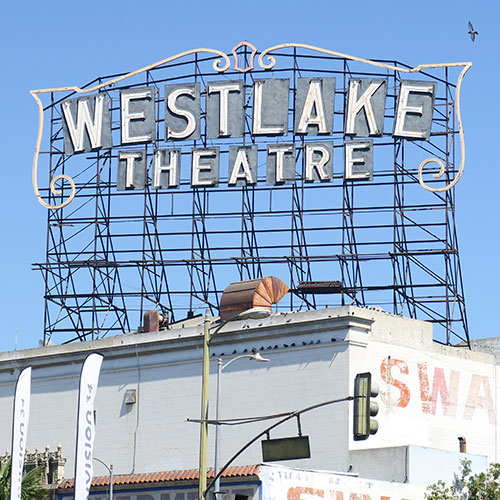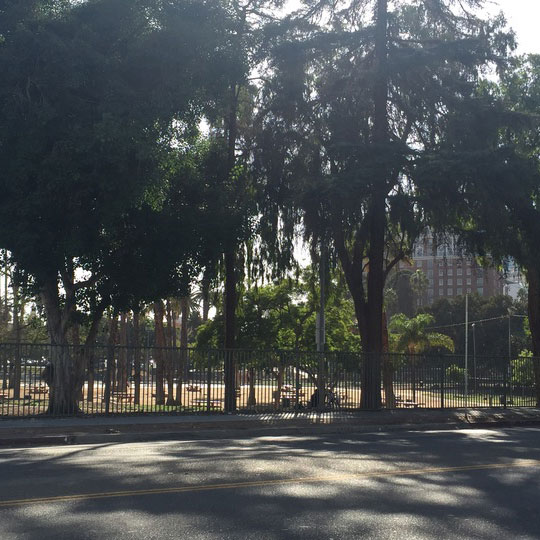The man behind the murals you take pictures in front of.
This is the story of Kent Twitchell's exciting life as a famous Los Angeles murlist.

“I always knew I’d be an artist, ever since I was three or something,” said well known and respected Los Angeles muralist Kent Twitchell. Originally from Lansing, Michigan, Twitchell got his first painting lessons when he was a teenager from his uncle Angus.
“My uncle Angus was a sign painter, and most of those guys had a reputation for drinking a lot. He always ended up owing my dad money,” laughed Twitchell. But instead of payment in cash, his father decided that having Angus give young Twitchell painting lessons would settle the debt. The lessons focused on lettering, a painting technique for painting script professionally on signs or trucks. By this point, Twitchell was already a street artist in his free time and soon enough, he was making his own money doing lettering and continued to do other painting jobs.
Originally, Twitchell thought he was going to be a journalist after studying journalism in high school. As soon as he graduated, Twitchell joined the Air Force as an illustrator. He landed the job based in London during the Cold War. In this position, he had to have top secret clearance because he had information about where the U.S. had their missiles hidden.
His main duties involved him working directly with the general in command. Twitchell had to create presentations for the general to give to Air Force V.I.P.’s. He also worked on briefs for the general when he had to give presentations to the rest of the office.
Twitchell's art background helped him create these presentations on 3x5 slides, with colorful backgrounds and precise lettering on top. He would do the lettering freehand and used spray cans to add effect, a tool he was used to from painting in the streets.
When he wasn’t working on project for the general, Twitchell would work on jobs for people in different departments whether it be making pamphlets, painting restroom signs or various jobs in the commissary. This lasted for five years under the command of President Eisenhower, then President Kennedy and finally President Johnson. When Twitchell was discharged from service, he came back to U.S. and began looking for another job.
Since Twitchell was only 17 when he joined the Air Force, he decided that college should probably be the next step in his career. After working in the Air Force, he realized he needed more discipline in his painting. He first attended the East Los Angeles College, then received his BA at California State University and his last years of school were spent at the Otis College of Art & Design where he received his MFA and graduated in 1977. Even though Twitchell was very accomplished as an art student, he admitted, “I could never be in school for more than two years.” During his time at school, he took his techniques to the streets and started dabbling in murals during the time he calls the “happy hippy days.” It didn’t take long for him to become recognized as a talented young street artist.

Throughout his career and due to his notoriety, Twitchell has made some unusual friendships. In his mural, the Holy Trinity with the Virgin, he became friends with his models who happened to be his favorite actors, Jan Clayton, Billy Gray and his all time hero Clayton Moore, whose daughter he’s still friends with today.
Michael Jackson even approached him because he wanted Twitchell to do a mural of him. Twitchell recalls one memory in particular that made him appreciate the friendships and opportunities his career has given him. “Michael Jackson used to call me all the time,” he said casually, “He called me Twitch.”

“I remember one time Michael Jackson and I, he had me come to his ranch and it was just him and I alone. Paul McCartney had just been there. We spent all day together playing with the animals and having fun. Playing with the chimps, playing with the giraffes, at the end of the day we had dinner in his dining room. I don’t know how it started but during our dinner conversation, one of us became talking about the Sinatra era. I grew up with Sinatra and Fitzgerald and I knew all the lyrics to their songs."
“I said to him do you know Stardust, it’s one of my favorites and he (Jackson) said, “Yeah!” and started to hum it. Then I began to sing the lyrics to show him I knew the lyrics to the song. He laughed and then he began to sing the lyrics too. We were going back and fourth humming and singing. He knew every song I knew and I knew every song he knew. We were just having a ball. And then I stopped. He said, “Whats the matter?” And I said, “You don’t get this but I grew up on a farm in Michigan, in the middle of nowhere and I’m sitting here singing with the worlds most famous man.” I said, “This is crazy!” And he thought for a second and he said, Yeah, what it must be like to be you!”
Just as Twitchell finished the Michael Jackson mural, Jackson was accused of sexually assaulting young children and the mural never found a home. In fact, it’s still sitting in Twitchell’s storage today.
Twitchell believes his mural of the Los Angeles Orchestra is his most well-known mural. You can see it from the Los Angeles 110 south bound, Harbor Freeway. He finished installing it in 1993 and it still it stands today. But not all of his pieces have lasted that long unharmed.
Another reason that Twitchell's name and artwork are well-known is because one of his mural’s became involved in a lawsuit. In 1974, Twitchell painted a mural called The Freeway Lady, a woman modeled after the actress Lillian Bronson, with a shawl over her shoulder that you could see from 101 Hollywood Edgeware Road. It was the first mural painted on a freeway and it was illegally painted over in 1986. Twitchell sued and received a settlement of $125,000 to restore the mural in 1992.
From this case, Bill Lasarow came to him with an idea to help other muralists. “Bill Lasarow was the founder of Art Scene which is the gallery guide to the arts for decades, we’ve been friends since the 70s,” said Twitchell. The idea was to help other muralists protect their work in case a mural that’s meaningful to a community gets vandalized. This was the beginning of the Mural Conservancy of Los Angeles. The MCLA works to restore, preserve and protect the legal rights of artists. “He (Lasarow) came to me with the idea and we saved all the Olympic murals, and others all over the city. We’re credited as being co-founders but it was really his idea,” said Twitchell.
The Holy Trinity with the Virgin by Kent Twitchell

Unfortunately, the Freeway Lady wasn’t the only mural of Twitchell’s that got painted over. After many years and many murals, Twitchell is working on a revival of his 1987 mural the Ed Ruscha Monument. It was illegally painted over in June of 2006. But last June he started working on a new version of an Edward Ruscha mural. It’s set to be finished in February of 2017 and will take up half of a wall on the side of the American Hotel in Downtown Los Angeles. Ruscha was Twitchell’s first mentor and an artist he's always looked up to. Twitchell is painting the mural on a special material he found in the fashion district called Polytab. This way he can paint the mural in his studio first. “I do it on this special material so when I put it on the wall as acrylic its exactly as if I painted it on the wall,” he said.
If you're looking for Twitchell, you can find him painting at his studio in Long Beach but if you drive around L.A., you can see his touch all throughout the city.





